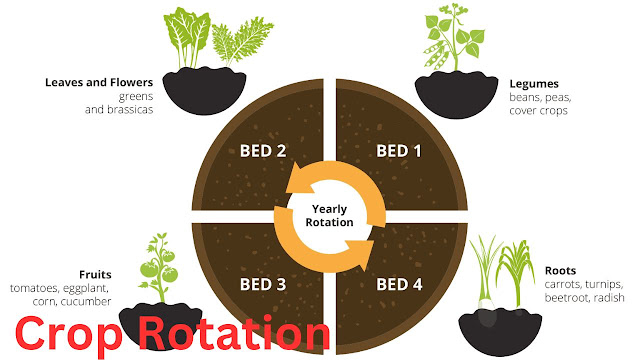Small Space Gardening Techniques
Introduction to Small Space Gardening
Small-space gardening has become increasingly popular as urban living continues to rise. It refers to the practice of growing plants in limited areas such as balconies, patios, or small yards.
Despite the lack of space, small-space gardening offers numerous benefits, including access to fresh produce, relaxation, and beautification of living spaces.
Choosing the Right Plants for Small Spaces
When embarking on small-space gardening, it's crucial to choose plants that thrive in confined environments. opts for compact varieties that don't require extensive root systems and can adapt to container or vertical growing conditions.
Herbs, lettuce, tomatoes, and peppers are excellent choices for small gardens due to their versatility and adaptability.
Vertical Gardening Techniques
Vertical gardening is a space-saving technique that involves growing plants upwards instead of outwards.
By utilizing walls, trellises, or hanging baskets, gardeners can maximize their growing area and create visually stunning displays. This method is particularly beneficial for vining plants like cucumbers, beans, and peas.
Container Gardening
Container gardening is ideal for small spaces as it allows plants to thrive in pots or containers. It's essential to choose the right size and type of containers based on the plant's needs, ensuring proper drainage and adequate soil volume.
Container gardening offers flexibility, allowing gardeners to move plants to optimize sunlight and space.
Utilizing Raised Beds
Raised beds are elevated planting areas constructed above ground level. They provide better drainage, soil aeration, and control over soil quality compared to traditional ground-level gardening.
Raised beds are particularly advantageous in small spaces, allowing gardeners to grow a variety of crops in a compact area.
Maximizing Sunlight
Sunlight is essential for plant growth, so it's crucial to maximize exposure in small gardens. Position plants in areas with the most sunlight, considering factors like shade from buildings or trees.
Additionally, reflective surfaces or light-colored walls can help redirect and amplify sunlight within the garden space.
Watering and Drainage Solutions
Proper watering and drainage are vital for plant health, especially in small gardens where space is limited. Use self-watering containers or drip irrigation systems to ensure consistent moisture levels while preventing water wastage.
Additionally, incorporate drainage solutions like gravel or perlite at the bottom of containers to prevent waterlogging.
Companion Planting
Companion planting involves growing compatible crops together to maximize space and enhance growth. Certain plant combinations can deter pests, improve soil fertility, and enhance overall garden productivity.
For example, planting marigolds alongside tomatoes can repel pests like nematodes while providing a pop of color to the garden.
Organic Pest Control
In small-space gardening, pest management is crucial to prevent damage to plants without resorting to harmful chemicals.
Natural pest control methods include introducing beneficial insects, using organic pesticides like neem oil or garlic spray, and practicing crop rotation to disrupt pest life cycles.
Seasonal Planning and Rotation
Effective garden planning involves rotating crops seasonally to optimize soil health and prevent nutrient depletion.
Plan your garden layout carefully, considering factors like plant height, sunlight requirements, and growth patterns. Rotate crops annually to minimize disease and pest buildup while maintaining soil fertility.
Soil Management
Healthy soil is the foundation of a successful garden, so it's essential to prioritize soil management in small spaces.
Conduct soil tests to assess pH levels and nutrient deficiencies, amending soil as needed with organic matter like compost or aged manure. Mulching can also help retain moisture and suppress weeds in small garden beds.
Creative Design Ideas
Small space gardens offer endless opportunities for creativity and innovation in design. Incorporate vertical elements like trellises or arbors to add height and visual interest.
Mix and match plant varieties for contrasting textures and colors, creating a visually appealing and functional garden space.
Maintenance and Care
Regular maintenance is key to keeping small gardens healthy and productive. Stay vigilant for signs of pests, diseases, or nutrient deficiencies, addressing issues promptly to prevent spread. Prune plants as needed to maintain shape promote airflow, and remove weeds regularly to prevent competition for resources.
Harvesting and Enjoying the Fruits of Your Labor
The ultimate reward of small-space gardening is the joy of harvesting and enjoying homegrown produce.
Harvest crops at peak ripeness for the best flavor and nutritional value, savoring the fruits, vegetables, and herbs of your labor. Share your garden bounty with friends and family, spreading the joy of gardening to others.
Conclusion
Small-space gardening offers a rewarding opportunity for urban dwellers to connect with nature and enjoy the benefits of homegrown produce. By employing techniques like vertical gardening, container gardening, and companion planting, even the smallest of spaces can be transformed into thriving garden oases.
Start small, experiment with different techniques, and watch your tiny garden flourish into a vibrant green sanctuary.
Unique FAQs
1. Can I start a small space garden if I live in an apartment?
Absolutely! Many apartment dwellers successfully grow plants on balconies, windowsills, or even indoors with proper lighting.
2. How much time does small-space gardening require?
The time commitment varies depending on the size and complexity of your garden, but regular maintenance tasks like watering and pruning typically take only a few minutes each day.
3. What are some easy-to-grow plants for beginners in small-space gardening?
Herbs like basil, mint, and parsley are excellent choices for beginners, as they're relatively low-maintenance and can thrive in small containers.
4. How can I deal with limited sunlight in my small garden space?
Choose plants that tolerate partial shade or consider investing in supplemental grow lights to provide adequate light for your plants.
5. Is it possible to compost in a small space garden?
Yes, composting can be adapted to fit small spaces using compact compost bins or vermiculture systems like worm bins.


.jpg)




.jpg)

No comments:
Post a Comment